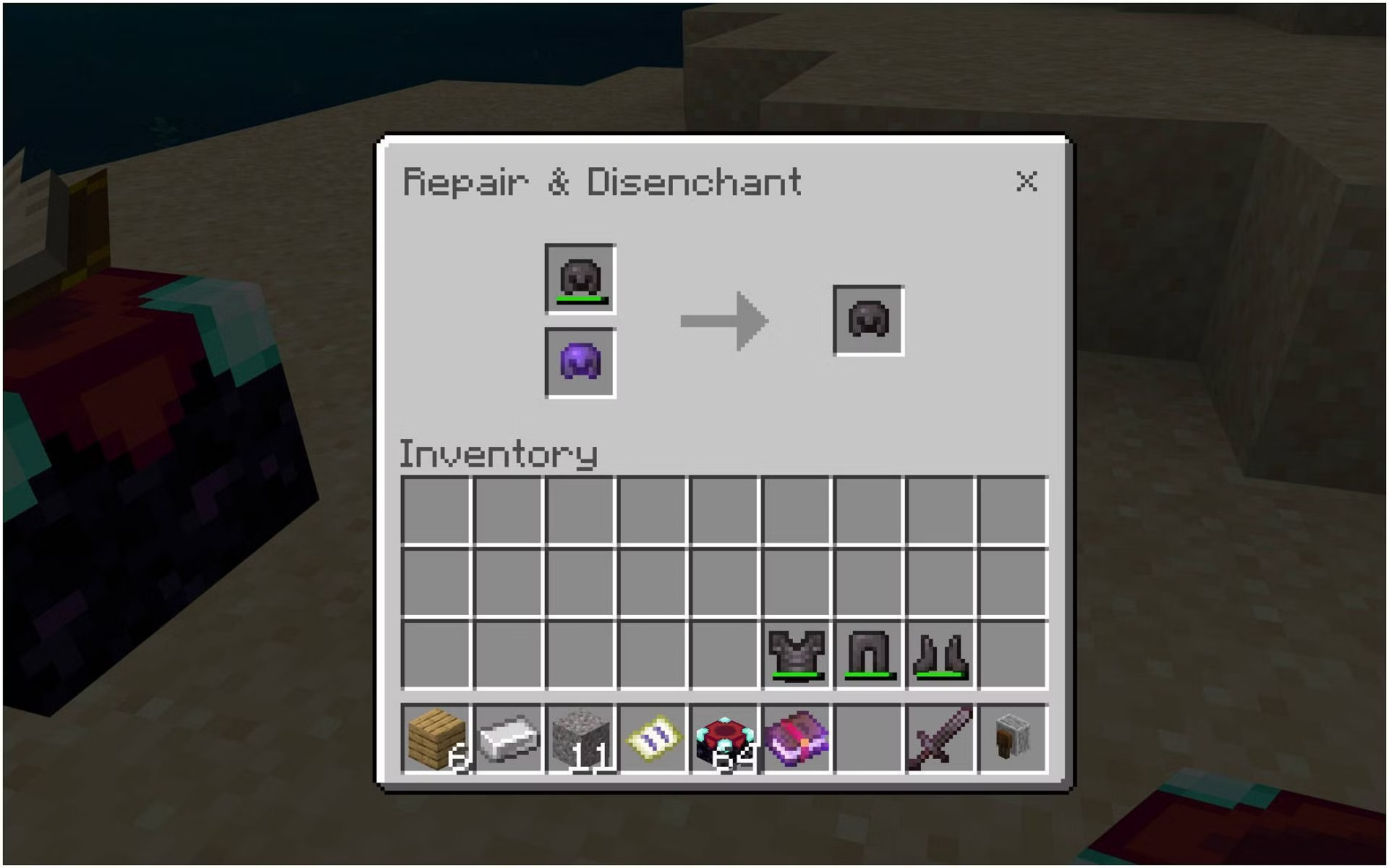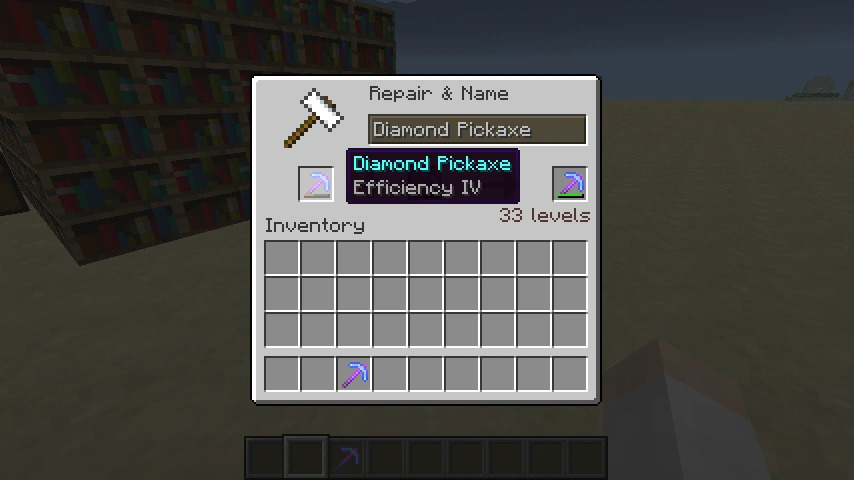In the enchanting world of Minecraft, where creativity knows no bounds, players are tasked with surviving and thriving in a blocky realm teeming with challenges and opportunities. Among the multitude of skills to master, the ability to repair items stands as a fundamental technique that can greatly enhance a player’s gameplay experience. Whether it’s weapons battered by combat, tools dulled by resource gathering, or armor weathered by battles, understanding how to effectively repair items is essential for long-term success in this virtual universe.
From the moment players step into the pixelated landscapes of Minecraft, they are thrust into a realm where resourcefulness and ingenuity reign supreme. The game’s mechanics encourage exploration, construction, and combat, demanding players to strategize and adapt to various scenarios. In the midst of this dynamic gameplay, items endure wear and tear, gradually losing their effectiveness over time. This is where the art of item repair comes into play.
Repairing items in Minecraft serves as a means of extending the lifespan of valuable tools, weapons, and armor. The process involves replenishing an item’s durability, essentially breathing new life into it. This not only saves precious resources that would otherwise be spent crafting replacements but also establishes a sense of attachment to gear that has stood the test of battles and challenges.
As players delve into the intricacies of item repair, they’ll uncover an array of techniques and mechanisms, each offering its own advantages and considerations. From the humble anvil, a versatile workstation for combining and repairing items, to the coveted grindstone, which strips enchantments for a chance at restoration, players have a plethora of methods at their disposal. Moreover, the introduction of experience points into the repair equation introduces an element of strategy, as players must weigh the cost of using precious experience against the benefits of renewing their equipment.
In this guide, we will delve deep into the mechanics of repairing items in Minecraft. We will explore the different tools and materials required, step-by-step repair procedures, and tips for optimizing repairs based on the player’s specific goals. Whether you’re a novice survivor or a seasoned crafter, mastering the art of item repair will undoubtedly elevate your gameplay, allowing you to venture further, build grander, and conquer the blocky realm with confidence. So, equip yourself with knowledge, gather your resources, and prepare to embark on a journey of revitalizing and preserving your most prized possessions.
How Many Items Here in Minecraft to repair?

In Minecraft, there are a wide variety of items that can be repaired using different methods and materials. The most common items that players repair include:
- Tools: Items like pickaxes, axes, shovels, and hoes that are used for mining, chopping wood, digging, and farming, respectively.
- Weapons: Swords, bows, crossbows, and other combat-related items that players use to defend themselves against hostile mobs.
- Armor: Helmets, chestplates, leggings, and boots that provide protection against damage from mobs and other hazards.
- Elytra: A pair of wings that allows players to glide in the air, which can also be repaired.
- Fishing Rods: Used for fishing and can be repaired to maintain their durability.
- Shears: Used to harvest wool from sheep and leaves from trees.
- Flint and Steel: Used to light fires and ignite TNT.
- Carrot on a Stick: Used to control pigs while riding them.
- Anvils and Grindstones: These are the tools players use to repair items. Anvils can also combine enchantments and rename items, while grindstones can remove enchantments in exchange for experience.
- Enchanted Books: While not technically repairing, players can combine two similar enchanted books in an anvil to create a single book with both enchantments, allowing for more powerful gear.
The methods of repairing these items can vary. Anvils are a common tool used for repairing and combining items, often requiring the use of another item of the same type or a material (like iron ingots or diamonds). The cost of repairing items with an anvil may also include experience points.
It’s worth noting that some items, like wooden tools and leather armor, cannot be repaired. They have a limited lifespan and will eventually break. Additionally, the “Mending” enchantment is a powerful enchantment that, when applied to gear, uses experience orbs collected by the player to automatically repair the enchanted item.
The variety of items available for repair in Minecraft contributes to the game’s depth and complexity, allowing players to tailor their equipment to their preferred playstyle and strategies.
What Kind of repair are Available in Minecraft?

In Minecraft, there are several methods of repairing items, each with its own mechanics and considerations. Here are the main types of repairs available in the game:
- Anvil Repair: The anvil is a versatile tool that allows players to repair and combine items. To perform an anvil repair, you’ll need two items of the same type: one with reduced durability (the item to be repaired) and one with full durability (the “sacrifice” item). Place both items in the anvil’s interface, with the item to be repaired in the left slot and the sacrifice item in the right slot. The anvil repair costs experience points, which are consumed during the process. The repaired item’s durability will increase, and any enchantments on both items will carry over to the repaired item.
- Enchanted Book Repair: Enchanted books are items that carry enchantments and can be applied to gear using an anvil. If you have two identical enchanted books, you can combine them in an anvil to create a single book that contains both enchantments. This can be a way to enhance your gear with multiple enchantments, making it more powerful.
- Mending Enchantment: The “Mending” enchantment is a unique enchantment that can be applied to items using an anvil and an enchanted book. Items with the Mending enchantment will absorb experience orbs collected by the player and use them to repair the item’s durability. This allows the item to essentially repair itself over time, making it a highly sought-after enchantment for long-term gear sustainability.
- Grindstone: The grindstone is another tool players can use to repair items. However, unlike the anvil, the grindstone is primarily used to remove enchantments from items in exchange for experience points. This can be useful if you want to salvage valuable enchantments from an item before discarding it.
- Combining Similar Items: Some items, like leather armor and wooden tools, cannot be directly repaired using an anvil. However, you can combine similar items of the same material in your crafting table to create a new item with slightly increased durability. This isn’t as effective as using an anvil, but it’s a way to extend the life of items that can’t be anvil-repaired.
These repair methods offer players flexibility in maintaining and customizing their gear. Whether it’s using an anvil to merge powerful enchantments onto a single item, employing the Mending enchantment for automatic repairs, or even strategically using grindstones to manage enchantments, mastering the art of item repair adds a layer of strategy and resourcefulness to the Minecraft experience.
Mending Enchantment to Repair Tools
The Mending enchantment in Minecraft is a highly valuable enchantment that allows you to repair items using experience points. It’s especially useful for maintaining the durability of your gear over the long term. Here’s how the Mending enchantment works and how to use it to repair your tools:
- Obtaining the Mending Enchantment: The Mending enchantment can be found as loot in generated chests, such as those found in dungeons, temples, mineshafts, and strongholds. You can also acquire Mending books by trading with librarian villagers. Once you have a Mending book, you can apply the enchantment to your gear using an anvil.
- Applying Mending to Tools: To apply the Mending enchantment to a tool, follow these steps:
- Step 1: Obtain a Mending enchanted book.
- Step 2: Acquire an anvil. You can craft an anvil using iron ingots (3) and iron blocks (4).
- Step 3: Place the tool you want to enchant and the Mending enchanted book in the anvil’s interface. The tool should be in the left slot, and the book should be in the right slot.
- Step 4: The enchantment cost in experience levels will be displayed. If you have enough experience points, proceed to enchant the tool.
- Step 5: Once the enchantment is applied, the tool will have the Mending enchantment, and its tooltip will show “Mending” as one of its enchantments.
- Using the Mending Enchantment: With the Mending-enchanted tool in your possession, the item will absorb experience orbs dropped from various activities, such as mining, killing mobs, and smelting. The experience orbs collected will contribute to repairing the tool’s durability.
- Automatic Repair: As you collect experience orbs, the Mending-enchanted item will automatically use the experience to repair its durability. The item with the lowest durability will be prioritized for repair. This means that your Mending-enchanted gear can effectively repair itself as long as you continue to collect experience.
- Balancing Experience: To ensure that your Mending-enchanted items receive the experience for repair, make sure they’re equipped or in your hotbar while collecting experience orbs. You can also disable the automatic pickup of experience orbs by crouching (holding the sneak key).
The Mending enchantment is highly desirable for players who want to keep their gear in optimal condition without constantly crafting new tools. It’s particularly useful for high-durability items like diamond tools and armor. By strategically using the Mending enchantment, you can prolong the life of your equipment and focus more on your adventures in the Minecraft world.
Conclusion!
In the sprawling landscapes of Minecraft, where survival and creativity intertwine, the ability to repair tools stands as a crucial skill that elevates gameplay and resource management. As adventurers delve deeper into caves, construct towering fortresses, and engage in battles against the menacing denizens of the blocky realm, the wear and tear on their trusty tools become undeniable. It is in these moments that the art of tool repair emerges as a vital technique to prolong the lifespan of items and preserve hard-earned resources. From the anvils that echo with the clang of renewal to the shimmering allure of the Mending enchantment, players have an array of methods at their disposal to mend their beloved tools. Through the calculated fusion of similar items using crafting tables, the seamless combination of enchantments on the anvil, and the enchanting prowess of Mending, the process of tool repair unfolds as an intricate dance between innovation and strategy.










